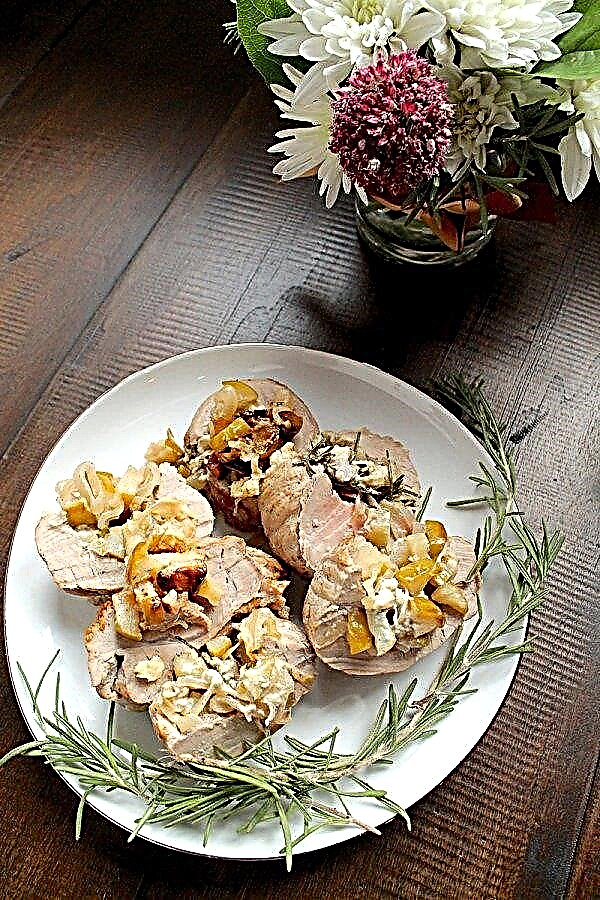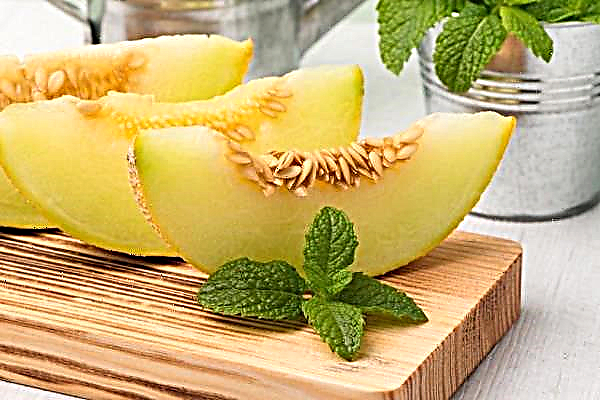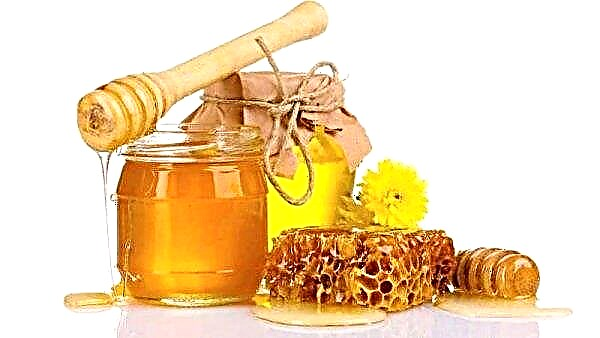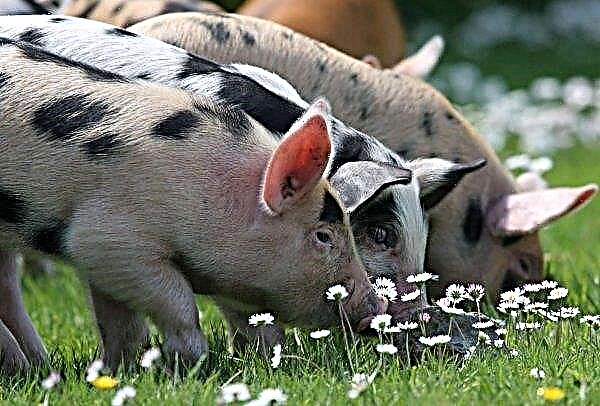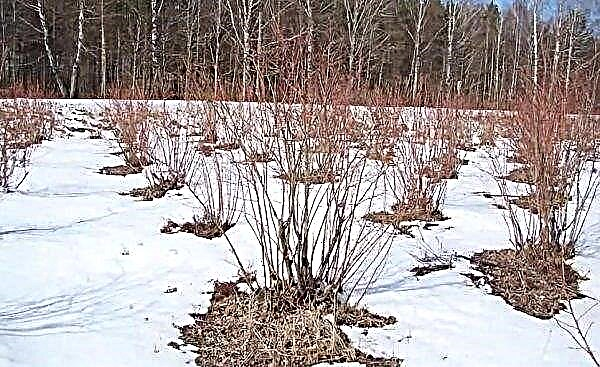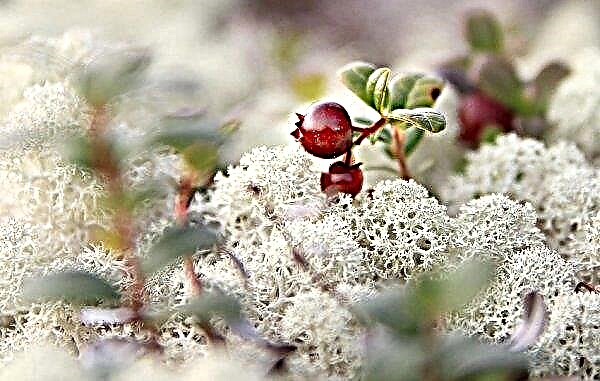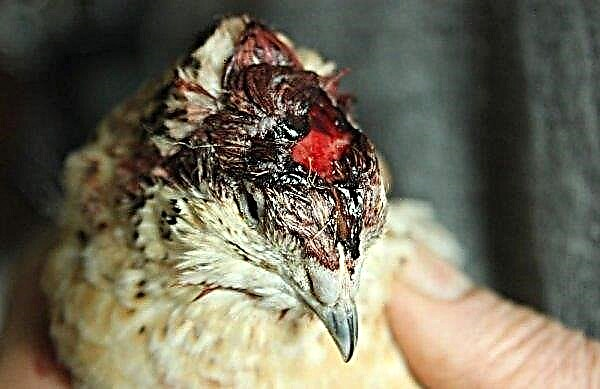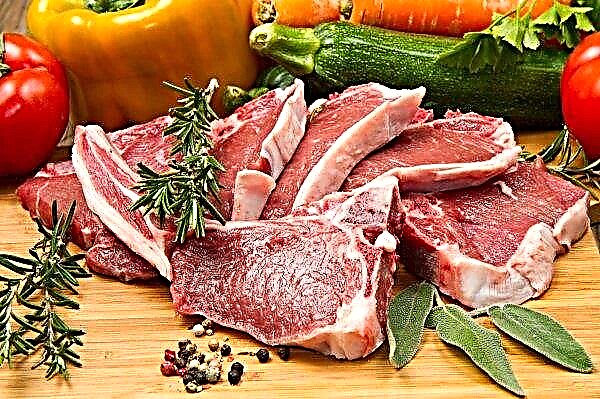Dill gives piquancy to dishes, is an excellent seasoning and is even used for medical purposes. One of the most beloved varieties of this culture is Alligator dill, in which its features and how to grow it correctly, will be considered in this article.
Grade description
Shrub dill Alligator belongs to the annual herbaceous plants of the umbelliferous family. It was first obtained in the early 2000s as a result of selection by the Gavrish company.
The alligator is a shrub 25–40 cm high. Outwardly it looks like a rosette from which dense raised stems come out, with interconnected internodes, the leaves are dissected, have a green-blue hue. Dill is bushy, the formation of flowers occurs late, so you can cut greens from it several times throughout the season.
This variety belongs to late-ripening varieties, the growth period to the ability to harvest the first crop is about 45 days, and flowering occurs on average 80 days after sowing.
Did you know? The name "dill" comes from the modified old Russian word "copra", which means "fragrant plant."
Advantages and disadvantages
Alligator is very often found not only in the beds of summer cottages, but also in large farms that grow it for sale in stores.
- Such popularity of the variety is due to its undoubted advantages:
- thick, juicy, fragrant greens;
- the ability to harvest several times during the season;
- strong immunity to pests and diseases;
- unpretentiousness in leaving;
- tolerance to errors in growing conditions: tolerates temperature extremes and lack of lighting.
How to plant
Despite the unpretentiousness of the plant, it is important to follow the cultivation agricultural technique in order to get a rich harvest.
The timing
According to the recommendations of specialists, it is possible to sow the seeds of this variety of greens twice a year: in late autumn and early spring. The alligator is characterized by frost resistance, so the planting material will perfectly tolerate a temperature of -6 ... -8 ° C. In spring, you can apply seeds to the soil immediately after the snow has melted, when the soil dries out a little. To sprouts appeared faster, it is worth waiting until the earth warms up to + 3 ° C.
Important! If you do not cut off the umbrellas that appeared during the dill season, it multiplies remarkably on its own, the seeds fall into the soil and greenery bushes appear again next season.
Site selection
Growing dill is considered a simple task, often summer residents do not think about how to choose the right place for sowing seeds. On the one hand, there is every reason for this, because the Alligator variety is unpretentious and hardy, but on the other hand, favorable conditions will guarantee a high harvest.
So, it is better to plant greens in that part of the area where during most of the day there will be uniform good lighting, slight shading is allowed. The soil should be neutral. Avoid places where carrots, fennel, parsley and other umbrella plants have previously grown. Contrary to popular belief, you cannot sow dill and parsley nearby. It is ideal to sow seeds in the soil on which solanaceous and leguminous crops were grown.
Seed preparation
The seeds of this herb contain many essential oils that form a film and slow down germination, so you need to prepare them before sowing:
- soak the seed for 3 days in hot water (+ 45 ... + 50 ° C), as it cools, add water to maintain the desired temperature;
- wrap the seeds in a damp cloth until germination;
- put on a horizontal surface and let dry, dry sprouted seeds can be sown on beds.
Video: Aligator dill seed germination
Bed preparation
The soil for sowing dill needs to be prepared in advance. It is best to hold this event in the fall, so that with the onset of spring, you can immediately begin sowing.
They dig the earth at the site, deepening by 20–25 cm. A few days before planting the seeds, the topsoil is fertilized with humus at the rate of 2-3 kg per square meter of soil or with diluted cow manure (1 liter of mullein per bucket of water).
Immediately before sowing, the soil in the beds is loosened and watered.
Scheme and depth of landing
Alligator seeds are sown on beds located 15–20 cm apart. Seeds are deepened into the soil by 0.5 cm in increments of 1.5-2 cm. Then they are covered with a layer of a fertile mixture of peat and humus, 2-2.5 cm thick and rammed.
Did you know? In ancient Greece, dill, thanks to its flowering umbrellas, was used in the form of bouquets as a decoration for the home.
How to care in the open ground
Dill Alligator is a very convenient plant, caring for it will not be difficult, but it is better to adhere to the basic general rules.
Watering
Immediately after planting, there is no need to water the seeds, they only need the moisture that remained in the thickness of the soil after the preparation of the site.
Further, the plant is watered 1-3 times a week in the daytime or in the evening, spending about 5 liters of water per square meter of planting. The greens are watered at the root, in plantings of an industrial scale, drip irrigation is used (water through special hoses is supplied a little directly under the root of each bush). In the dry period, you need to regularly sprinkle (irrigate) the leaves of dill, but you need to do this in the morning so that the scorching rays of the sun do not burn the greens.
The frequency of soil moisture is adjusted as the weather changes: in hot weather the number of irrigations can reach 2-3 times, in cool and rainy periods no more than 1 time per week.
Shelter film
The alligator belongs to cold-resistant varieties and the adult plant does not need additional shelter. However, if the sowing of seeds is carried out before winter or very early spring, then it is recommended to cover the beds with seeds until the first seedlings appear with a film on top. Such insulation will allow to somewhat accelerate the output of sprouts.
Top dressing
In general, it is enough to fertilize the soil itself before sowing, according to the scheme described above, while the bushes themselves do not need additional fertilizer during the growing season. The exception is when the bushes become yellow or have a painful appearance. In this case, a 1% solution of mullein or urea is applied to the soil once: 5 g per 10 l of water.
Important! Dill has the ability to accumulate harmful substances from the soil, so abuse of chemicals and drugs should be avoided.
Soil care
It is not necessary to handle the area where greens grows not so often.
The care scheme is standard: weeding, loosening, thinning:
- weed weeds are especially carefully needed only at the first stage of bushes growth. As soon as the plant reaches "adult" sizes, the presence of weeds is not critical for it and will not cause significant harm. As the leaves grow, weeding is carried out as necessary, so as not to clog the space;
- loosen Land under planting is important and necessary, it will relieve small weeds and promote soil aeration. Loosen the ground as necessary, 1-2 days after watering, carefully, trying not to touch the root system of the bushes, to a depth of 5 cm;
- if the seeds were planted without observing the interval between them, the planting can be very thickened. In such cases it is necessary thin out beds, removing extra seedlings and leaving bushes at a distance of 2 cm from each other.

Harvesting
Alligator greens are harvested when the height of the stems reaches the optimum height and inflorescences begin to form, usually this occurs 1.5 months after sowing the seeds.
Cut greens in the early morning in dry weather in order to preserve the juiciness and aroma of leaves for as long as possible. When pruning, scissors are used, leaving stems at least 2-2.5 cm high so that new foliage can grow on them.
It is better to store the collected dill intended for fresh consumption in a bag or cling film in the refrigerator. For the preparation of marinade use inflorescences of the plant.
To keep the greens for the winter, the hostesses use various methods:- Freezing is the fastest way to store all the beneficial substances in the grass. Only young twigs with a length of not more than 7 cm are used for freezing. They are washed, dried and stored in a freezer in plastic bags wrapped in a tube.
- The more famous way our grandmothers used is drying dill. In this case, more mature shoots will do. They are washed, crushed and dried in the open air until completely dry, after which they are poured into a jar for permanent storage.
Network user reviews
ADVANTAGES: good germination.
DISADVANTAGES: dislikes drought.
Alligator sowed these seeds last year, I liked it, the main thing is to plant it correctly, the result made itself felt. Before planting, I soak them for 3 hours, then dry them on a napkin (slightly) and sow them in the dug up, fluffy soil with grooves, slightly sprinkle with earth. Germination is good, on the 3rd day sprouts appear.
For greens cut off as necessary, for the umbrella leave until fully ripened.
I planted for greens three times a season, I liked the result. I use for pickling cucumbers, tomatoes, zucchini, eggplant. I dry umbrellas for the winter, after drying, grind on a coffee grinder and add to dishes. I recommend this variety to everyone.


